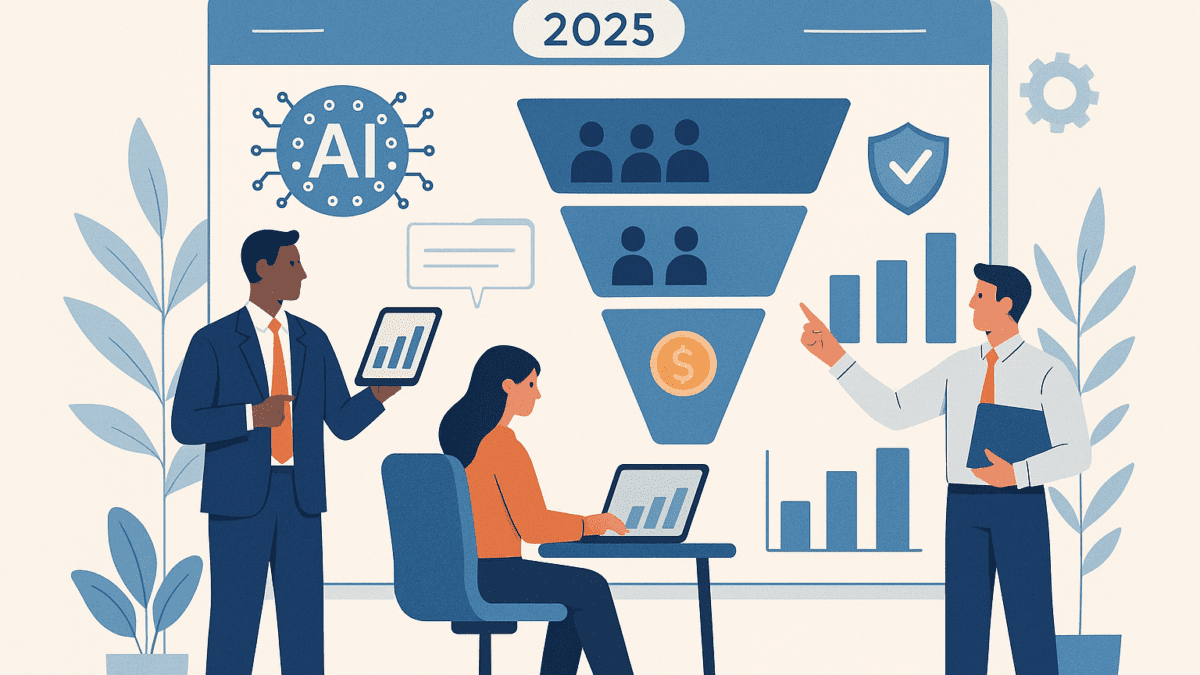The Rise of Predictive Lead Scoring: How AI Is Helping B2B Teams Prioritize Prospects in 2025
In 2025, B2B sales is more competitive than ever. Buyers research independently, demand hyper-personalization, and rarely engage with vendors until late in the decision-making process. For sales teams juggling hundreds or thousands of leads, the challenge is clear: Which prospects deserve immediate attention, and which can wait?
That’s where predictive lead scoring, powered by artificial intelligence (AI), comes into play. Unlike traditional lead scoring models that rely on static criteria such as job title or company size, predictive lead scoring uses advanced machine learning algorithms, behavioral signals, and intent data to predict which prospects are most likely to convert.
This shift is transforming how B2B companies qualify leads, align marketing and sales teams, and ultimately drive revenue growth.
What Is Predictive Lead Scoring?
Predictive lead scoring is the process of using AI and machine learning to assign scores to leads based on their likelihood to convert into paying customers.
Instead of relying only on predefined rules (e.g., “+10 points if a VP downloads a whitepaper”), predictive models analyze:
- Firmographic data (industry, revenue, company size).
- Demographic data (job title, seniority, role).
- Behavioral data (website visits, email engagement, webinar attendance).
- Intent data (search activity, competitor research, content consumption).
- Historical CRM data (past deals won/lost, sales cycle length, buyer patterns).
The result? A dynamic and data-driven scoring model that continually improves over time.
Why Traditional Lead Scoring Falls Short
Many B2B companies still rely on manual or rules-based scoring. But in 2025, this approach is increasingly flawed:
- Static and Outdated: Buyer behavior evolves too quickly for static scoring models to keep up.
- Subjective: Manual scoring often reflects marketing’s assumptions rather than real buyer intent.
- Limited Data: Traditional models ignore vast amounts of third-party intent and behavioral data.
- Misalignment: Sales often complains that “MQLs” from marketing aren’t ready to buy, creating friction.
Predictive lead scoring addresses these pain points by offering evidence-based prioritization.
How AI Predictive Lead Scoring Works
1. Data Collection
AI pulls data from multiple sources: CRM systems, marketing automation platforms, website analytics, intent data providers, and external firmographic databases.
2. Pattern Recognition
Machine learning models identify correlations between lead attributes and conversion outcomes. For example, AI may discover that VPs from mid-sized fintech companies who attended webinars have a 35% higher likelihood of closing.
3. Dynamic Scoring
Instead of static rules, leads receive real-time scores that update as new data comes in.
4. Prioritization & Recommendations
Sales teams receive ranked lists of leads with suggested next steps (e.g., “Call this prospect today—they’ve revisited the pricing page 3 times”).
Benefits of Predictive Lead Scoring for B2B Teams
1. Higher Sales Productivity
Reps focus only on high-intent leads, reducing wasted time on unqualified prospects.
2. Shorter Sales Cycles
By identifying ready-to-buy leads faster, predictive scoring accelerates deal velocity.
3. Stronger Marketing-Sales Alignment
Both teams work from a shared, data-driven definition of lead quality.
4. Improved Conversion Rates
Studies show companies using predictive lead scoring see up to a 20–30% lift in conversion rates.
5. Scalability
AI models can handle millions of data points, far beyond human capacity.
Real-World Use Cases in 2025
SaaS Startups
A SaaS provider for HR tech integrated predictive scoring into its CRM. Instead of pursuing all free trial signups, reps prioritized those showing high engagement with advanced features. Result: 28% increase in paid conversions.
Enterprise IT Vendors
An IT services company used predictive scoring to filter leads from content syndication campaigns. AI identified signals that differentiated “researchers” from “decision-makers.” Result: 35% reduction in wasted sales follow-ups.
B2B Manufacturing
A manufacturer targeting global supply chain leaders used intent data to spot buyers researching “sustainable packaging.” Predictive scoring helped prioritize these leads, aligning outreach with trending demand.
Challenges of Predictive Lead Scoring
1. Data Quality
AI models are only as good as the data they’re trained on. Incomplete or messy CRM data can skew results.
2. Adoption Resistance
Some sales reps may distrust “black-box AI” and resist relying on scores.
3. Integration Complexity
Connecting multiple data sources (CRM, MAP, third-party intent) requires strong infrastructure.
4. Ethical Considerations
Predictive models must be monitored to prevent bias (e.g., favoring certain industries unfairly).
Best Practices for Implementing Predictive Lead Scoring
- Clean Your Data First
Ensure CRM and marketing databases are updated and deduplicated. - Start with a Pilot
Test predictive scoring with a subset of leads before rolling it out company-wide. - Align Sales & Marketing
Collaborate on what “qualified” really means and validate scoring outcomes together. - Leverage Intent Data
Partner with providers like Bombora, 6sense, or Demandbase to enrich scoring models. - Keep Humans in the Loop
AI scores should guide—but not replace—human judgment in complex deals.
The Future of Predictive Lead Scoring
Looking ahead, predictive lead scoring will evolve into prescriptive lead scoring—AI won’t just rank leads but also recommend exact actions reps should take (e.g., “Send a case study, then schedule a demo in 3 days”).
We’ll also see:
- AI Agents in Sales: Autonomous AI assistants managing entire lead qualification workflows.
- Voice & Video Data Integration: AI analyzing tone, sentiment, and engagement during calls to refine scores.
- Cross-Channel Predictive Models: Unified scoring across email, social, website, and offline data.
Conclusion
In 2025, predictive lead scoring is more than a trend—it’s a must-have for competitive B2B sales teams. By leveraging AI and intent data, businesses can prioritize prospects with the highest likelihood to convert, shorten sales cycles, and improve ROI.
The key is not to replace human intuition, but to augment it with AI-powered insights. When marketing and sales align around predictive models, organizations unlock scalable growth in a privacy-first, data-driven world.
Call-to-Action
Turn your content into a conversion engine — Explore our B2B lead gen solutions.





